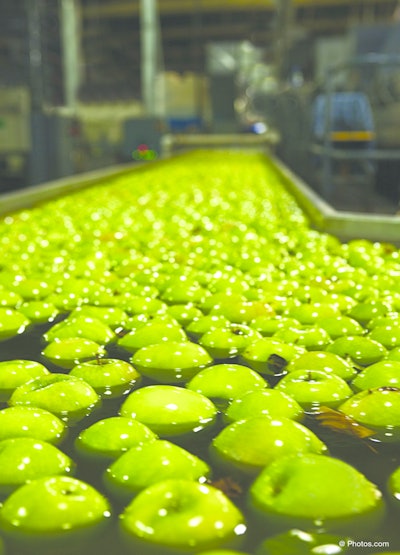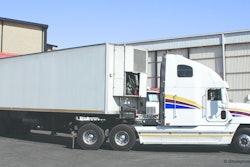
Notwithstanding the increased movement by consumers and grocers alike to “buy local,” the food chain is becoming progressively more globalized for most countries around the world. This globalization has created a range of opportunities and risks.
Emerging Trends in the Global Food Supply Chain
On the positive side, U.S. companies are aggressively eyeing new markets with millions of potential consumers. Conversely, a far reaching and more complex supply chain is prone to risks brought about by regulatory and non-tariff barriers, disruptions due to natural disaster, political upheaval and economic instability, rising oil prices and its effect on food production and transportation, and the dynamic and unrelenting variations in consumer demands and desires.
Painting the big picture
In their recent sector report, Food Industry: still solid but price volatility will bear watching, global credit-insurer Coface outlines some of the larger trends that are impacting food supply chains.
Naturally, food prices are a reflection of various inputs, starting with raw materials. In June 2010, raw material prices headed higher again, after easing from their previous spike in 2007/2008. Grain, sugar, meat, diary, soybeans, and cocoa are some of the commodities that have experienced significant price hikes, particularly in emerging economies.
As for 2012, it’s likely that food prices in the U.S. will settle into their more historic trajectory, which means price increases in the neighborhood of two and a half to three and a half percent, says Kenneth Moyle, senior vice president, Coface North America.
However, there are some wild cards in the current mix that could upset this forecast, he cautions. “Energy prices and natural disasters are the biggest ones,” while grain prices, too, could start to fluctuate sharply due to changes in the tax code.
Specifically, tax incentives targeting ethanol in the EU, and biodiesel in the U.S., could alter global grain production—a classic example of the integrated relationship between tax codes, energy prices, and agriculture production.
Indeed, Moyle cites another example of the integrated nature of food supply chains, one of which became apparent during the global recession. “A lot of the large seafood producers were financed by Icelandic banks, and when Iceland had their crisis, they had trouble borrowing. Some producers either had to stall production or cut back, although now most of them have access to capital again for their production facilities,” he says.
Cold Storage Evolves to Meet Global Demands
In a further illustration of how risk can unleash a ripple effect throughout a global supply chain, Moyle notes: “Of all the commodities in world trade, food becomes the most political. That’s because you have farm subsidies in many countries, you have arguments over genetically modified foods, and so on. And, a lot of the revolutions that started last year were started over food shortages. Dictators stay in power when everyone’s being fed, but people take to the streets when they get hungry.”
In an interview with PBS NewsHour last September, Rami Zurayk, an agronomy professor at the American University of Beirut explained, “I think that the prices of food mobilized people,” he said, referring to the political uprising in the Middle East and North Africa.
“If you look at Tunisia, for example, you see that the Tunisian uprising started in the rural area,” where many small farmers live and are just looking for a means to support themselves and their families, he said. It was a young, college educated, but unemployed Tunisian named Mohamed Bouazizi who was selling fruit and vegetables in the street without a license and that set himself on fire after he was confronted by authorities, which many consider the genesis of the Arab Spring.
Trade policy and non-tariff barriers
Trade policy, both in the U.S. and abroad, is another key component of the global food supply chain. The seemingly capricious imposition of non-tariff trade barriers, such as antidumping and countervailing duties, quotas, certain regulatory requirements, and sanitary and phytosanitary measures, amount to one more area that’s prone to fluctuation when it comes to imports and exports of food and beverages throughout the world.
According to Kam Quarles, director for legislative affairs at McDermott Will & Emery LLP (and a member of Food Logistics’ editorial advisory board), says that while the World Trade Organization (WTO) and various free trade agreements (FTAs) have addressed tariff barriers, “a lot of the future impediments (to global trade) may transition to phytosanitary barriers.” He remarks, “We spend a great deal of time working on pest and disease issues.”
And, while the U.S. “vigorously adheres to international protocols surrounding sanitary and phytosanitary measures,” which must be based in sound science, “there is a lot of variation from country to country,” says Quarles. “One country’s definition of ‘sound science,’ especially if they have a very active political constituency, may differ widely from the U.S.”
For the moment, Quarles is keeping a close watch on “a new raft of rules” that will be released shortly by the U.S. Food and Drug Administration, which promise to affect foreign suppliers seeking access to the U.S. market, as well as the U.S producers themselves.
He also is hearing a lot of concern from food clients over the recent announcement by the White House to consolidate several trade agencies under one entity.
“For agriculture exporters, in particular, it caused some concern simply because we’ve got some very good people at the USTR (U.S. Trade Representative’s Office) who know agriculture inside and out. The USTR is also a very nimble agency. Along with their counterparts at the U.S. Department of Agriculture and the Foreign Agriculture Service, they work very efficiently to deal with trade related issues. Some of them are large scale issues like the implementation of a free trade agreement or the WTO’s Doha Round, and some of them are smaller, like a shipper who has 10 containers of agricultural products that have gotten hung up in a port somewhere and needs help getting them released.”
Transparency as a competitive weapon
It’s been said many times that every business threat is an opportunity. When it comes to the proliferation of rules and regulations pertaining to the food supply chain, this truism is spot on.
Transparency is Crucial in Maintaining Consumer Loyalty
Of course, while technology tools that boost visibility and transparency are the first step in “keeping regulators off your back,” acknowledges Sean Robinson, global industry manager, food and beverage, for GE Intelligent Platforms, the more evolved companies also view transparency as a “competitive weapon.”
Although a host of Chinese companies have been implicated in recent years for infractions that have hurt the credibility of their products in foreign markets, the mindset of that country’s government and food companies has begun to change, Robinson says.
Simply put, “They’re trying to be a better trading partner,” he explains. It makes more sense to “offer a clearer path to ingredients, packaging, and other critical information of interest to foreign buyers, while at the same time avoiding inspectors tromping through their factories on a regular basis.”
Robinson describes GE Intelligent Platforms’ solutions as the “backbone for data in the factory.”
The solutions “make it possible to tie in lots of different categories of information,” he says, “all of which contribute to very robust traceability, capability, and risk management. But, it also delivers the kinds of analytics that allow companies to look for process inefficiencies, equipment inefficiencies, or other breakdowns that are causing excessive losses of materials.”
Food Safety: Traceability and Transparency by Way of Blockchain
For example, “A quality manager can quickly see the ingredients that went into a product and immediately see whether a critical process like cooking temperatures or mix rates were where they should have been. Whereas a continuous improvement manager, using the same backbone, is going to be provided with the data surrounding what happened inside that oven, that are going to be what he needs to know in order to tune the oven so that the right amount of natural gas is getting burned and the oven is operating more efficiently.”
Robinson adds, “We’ve also got very particular pieces that make it possible to integrate both inbound data from a supplier, as well as push data up to an enterprise system or to an external system. That way, a major candy manufacturer can take inbound supplier data from its chocolate or peanut providers, for instance, and tweak the way they run their own factories so that they know the best way to re-melt that chocolate to get a properly tempered coat or the best way to re-blanch or roast peanuts to ensure they’re not carrying any salmonella further down the supply network.”
Bob Gates, GE Intelligent Platforms’ global technical manager, emphasizes the risk mitigation aspect of implementing these types of technology tools.
“During the 1970s, when the auto industry had a recall, it meant half a million cars had to be recalled. Now, they’re able to send you an email and let you know that your car is one of 80,000. When it comes to the food business, they’ve started to do the same thing, and it’s all being driven by risk mitigation. Sure, customer satisfaction gets a boost and quality is improved too, but the really big part is risk mitigation.”
Avoiding a recall obviously saves a company a lot of money, but it also goes a long way in protecting a brand. “If you get your brand out there for the wrong reasons, then you’ve just done more damage to your brand than you could have possibly done in 10 years trying to build it, due to one unfortunate incident,” says Gates.
Turning the discussion back to China, and the country’s ability to attract foreign manufacturers based solely on the country’s abundance of cheap labor, Robinson offers a different perspective.
“Sure it can make economic sense to catch shrimp off the coast of Oregon or Newfoundland and have it packed and frozen by somebody in China or Taiwan, but what we’ve seen lately is that companies are starting realize the cost advantages aren’t as great as they thought for a bunch of reasons,” he says.
For starters, “Companies haven’t done all they can internally to make the best use of operational and continuous improvement tools that they have, and then combine them with some of the data that may have been siloed in a quality or risk management system. Companies are using our solutions to break down walls between their systems. They’re realizing that if they repurpose some of their quality or food safety data that teaches them about significant losses of material, significant losses of capacity, and they address those losses, they discover that China may not be that great. In other words, they can bring operations back home [to the U.S.] and they can avoid having to outsource a certain class or category of ingredients or packaging material.
“We have a customer in the diversified food business who’s told us that they’ve been able to reduce their material loss by 4 to 6 percent and improve their first-pass quality by 15 percent—those are the kinds of numbers that change your cost equation and make it possible for you to keep decent paying jobs in developed economies instead of always chasing the cheapest labor,” Robinson says.
U.S. food sector getting up to speed
According to David Mader, principal solutions consultant at Manhattan Associates, while the food sector has generally been behind other verticals like electronics and apparel in some aspects of supply chain management, the sector is quickly getting up to speed. Not surprisingly, the Food Safety Modernization Act (FSMA) is a major driver.
“We’re seeing more grocers, foodservice companies, and wholesalers really start to look at how they’re getting product and the data that they’re getting with it,” says Mader. “Companies are looking for more visibility throughout their supply chain and they want information as quickly as possible, all the way down to the case level. And, if there’s a recall, they want to know where they need to go in the supply chain to correct that issue.”
In addition, more companies in the food sector are adopting product flow models that allow them to pull time and cost out of the supply chain, he says.
Global Online On-Demand Food Delivery Market to Grow 32 Percent by 2021
“Grocers have really never done that before,” Mader explains. “There are only a handful of them that are moving towards more of a flow model. But, those that are can cut days out of the process by circumventing the traditional steps of receiving inventory, stocking it, pulling it back down and putting it on a truck for delivery.”
The flow model works in tandem with Manhattan Associates’ Total Cost to Serve application, which takes into consideration inbound landed costs, DC costs, outbound shipping costs, and inventory carrying costs, which can literally provide companies with “the ‘total cost to serve’ a single box of strawberries to the end consumer,” explains Mader.
Keeping the supply chain “fresh” is definitely a growing trend, notes Kristin Wall, retail industry strategy manager at Manhattan Associates. She also sees more interest in the industry for local produce and organic produce. Not only is locally sourced produce attractive to consumers, but sourcing grapes from California or South Florida rather than Chile, for instance, equates to fresher produce on the shelves for a longer period of time, and quicker and cheaper transportation costs, too.
Meanwhile, mass retailers continue to expand their presence in the food sector, says Wall. “Target is redesigning their stores, pulling in more fresh produce and grocery items. Walmart has been doing the same thing. They’re both really starting to hone in on the grocery market.”
And for Walmart, the concept isn’t contained to the U.S. alone. Since the company’s first international foray—to Mexico in 1991—Walmart has expanded into 25 more countries. Currently, the company’s international division is one of the fastest growing parts of their overall operations.
Worldwide Food Production at Risk
A report from the United Nations Food and Agriculture Organization (FAO), released in late November, warns that a reduction of viable land and water resources is putting worldwide food production at risk.
According to the FAO, “Widespread degradation and deepening scarcity of land and water resources have placed a number of key food production systems around the globe at risk, posing a profound challenge to the task of feeding a world population expected to reach 9 billion people by 2050.”
The report, entitled State of the World’s Land and Water Resources for Food and Agriculture (SOLAW), states that although the past 50 years have been marked with a notable increase in food production, “in too many places, achievements have been associated with management practices that have degraded the land and water systems upon which food production depends.”
Currently, a number of those systems “face the risk of progressive breakdown of their productive capacity under a combination of excessive demographic pressure and unsustainable agriculture use and practices,” the report states. And, this is happening in every region around the world.
As one would expect, competition for viable land and water resources will become “pervasive,” pitting urban and industrial users against one another as well as within the agricultural sector – between livestock, staple crops, non-food crop, and biofuel production.
Developing countries are most threatened, the report says, because quality land, soil nutrients, and water are least abundant.
At the same time, “Water scarcity is growing and salinization and pollution of groundwater and degradation of water bodies and water-related ecosystems are rising,” the report says. “Large inland water bodies are under pressure from a combination of reduced inflows and higher nutrient loading — the excessive build up of nutrients like nitrogen and phosphorus. Many rivers do not reach their natural end points and wetlands are disappearing.”
Furthermore, “In key cereal producing areas around the world, intensive groundwater withdrawals are drawing down aquifer storage and removing the accessible groundwater buffers that rural communities have come to rely on. Because of the dependence of many key food production systems on groundwater, declining aquifer levels and continued abstraction of non-renewable groundwater present a growing risk to local and global food production.”
As for the recommendations, the report emphasizes that, “Improving the efficiency of water use by agriculture will be key. Most irrigation systems across the world perform below their capacity. A combination of improved irrigation scheme management, investment in local knowledge and modern technology, knowledge development and training can increase water-use efficiency.”


















